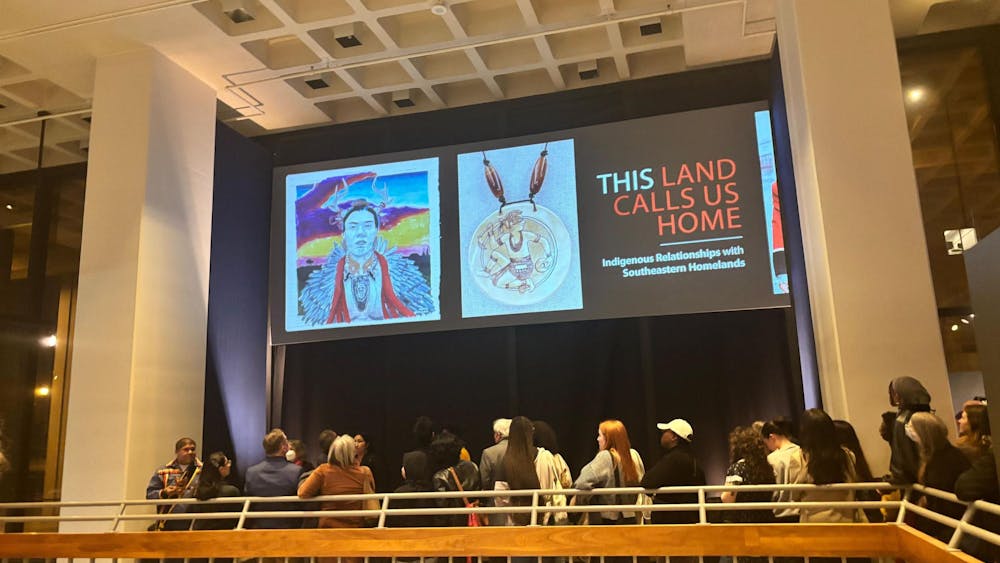 From a concrete, free-standing kitchen at a coastal village of Senegal, the redolence of sweet cassava and red palm oil implies the arrival of lunchtime. Propane hisses and burns over an open valve. A lidded cast-iron bowl bathes in the steady flame atop the rusted burner of the 20-pound tank. Carrots, cabbage, okra and peeled tomatoes breathe in the steam and exhale away their raw rigidity - their aroma escapes the lid.
From a concrete, free-standing kitchen at a coastal village of Senegal, the redolence of sweet cassava and red palm oil implies the arrival of lunchtime. Propane hisses and burns over an open valve. A lidded cast-iron bowl bathes in the steady flame atop the rusted burner of the 20-pound tank. Carrots, cabbage, okra and peeled tomatoes breathe in the steam and exhale away their raw rigidity - their aroma escapes the lid.
The meal is almost ready. Awa Diouf turns the knob, cutting off the gas. She yells from the doorway across the sand-swept yard of the compound. Her shrill voice carries across the mango orchard to the football pitch, where many of her children carouse in young revelry among donkeys and chickens.
"Yangi an!" she calls shrilly, without repeating herself, and disappears back into the shade. I have learned enough Wolof vocabulary to know what she has announced, but if I am unsure, the steam and scent emanating from the kitchen doorway affirm my understanding. It's time to eat.
In Senegal, lunch is often the most eventful meal of the day. As opposed to the way things are typically conducted in the States, where we build up throughout the day to a relatively sizable dinner, the Senegalese meal plan follows the arch of the sun. Both appetite and daylight share their highest moments, and a heavy lunch compliments the day's peak. This way seems logical, especially in a village that still depends on the mercies of the sun. The shade beneath the village palaver tree and tin-roof structures seems more inviting at the hottest part of the day, and the darkness of night remains still a long way off: the perfect moment to sit without schedule and eat without restraint.
Awa re-emerges. She balances the fruits of her labor in aluminum bowls stacked three-high atop her flower-printed headpiece. Steam clouds break and twirl behind her. The compound residents, gathered around bamboo mats beneath the shade of the tree, await their communal bowl. Awa flattens the earth with her foot and brushes away ripples of sand that have collected on the mat and, while keeping her back straight, bends her legs and places a bowl on the ground. One goes to the children, the next to the men, the last to the women.
Today, I eat with the children. Eight of us crouch around the battered bowl no larger than a meter in diameter. The oldest daughter removes the lid, revealing ceebu jën, the archetype of Senegalese cuisine: fish and rice, cooked in palm oil and served with steamed vegetables and, today, mango chutney. A picture-perfect lunch.
But the picture doesn't last long as a hunger-driven motion sets in. The lid barely leaves the lips of the bowl before eight eager hands scoop into the rice and tear at the fish. We barely talk as we shovel food into our mouths and pass around the vegetables.
This communal meal - eight of us digging into a single bowl - would look silly in the States. But here, it makes sense. Senegal has maintained a way of eating that matches perfectly its familial cultural values.
As eight-year-old Mamadou tosses bits of carrot and cabbage into my vicinity, my mind wanders for a moment to other writers before me who have gone to foreign places and seen familiar aspects of life rearranged for a distinctive time and culture.
In 1946, Albert Camus stepped onto the docks of New York Harbor, where the city immediately hit him with la puissance, la force économique - a forceful display of economic power.
A funeral home advertises private death arrangements - "You die and we do the rest" - and renders the afterlife as consumable as anything else in mid-twentieth-century New York. Economic power until death, and beyond. Consequently, Camus writes that knowing a place is knowing how its people die.
The sudden sweetness of chutney amid the savory draws my attention back to the bowl. But Camus' observation and conclusion sticks with me. I can make a similarly constructed remark here: knowing a place is knowing how its people eat. Communal eating is communal living - a normalcy in this rural Senegalese village. Everyone dies, everyone eats, but how they do it determines who (or where) they are.
I remember my first day in Senegal, when my host mother licked her fingers clean of palm oil and rice and then proceeded to pass bits of fish across the bowl in my direction. Before I could object at any sanitary violations in this act, I shrugged my shoulders and ate the fish. Here in Senegal, the communal bowl is a symbol of self-sacrifice. For better or for worse, coming to the bowl renders a releasing of all individuality for the sake of family. It's a lesson in codependency from a nation of teranga, or hospitality.
Back home, I have grown accustomed to my individuality, preferring to stand tall as a single oak tree, or as a temple pillar that stands apart from the rest.
The communal bowl offers a new perspective, one that is distinctly African: the chance to become part of a forest, or part of the temple itself.
Read More
Trending








